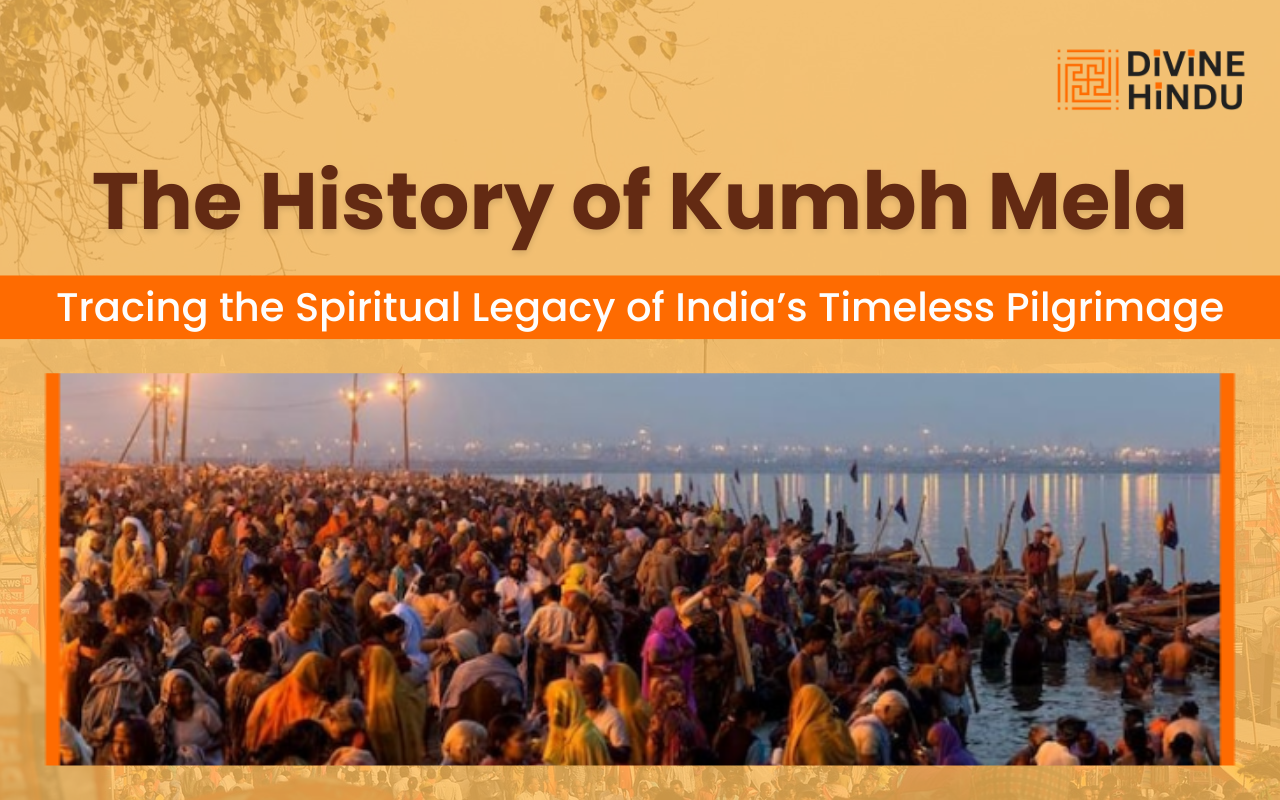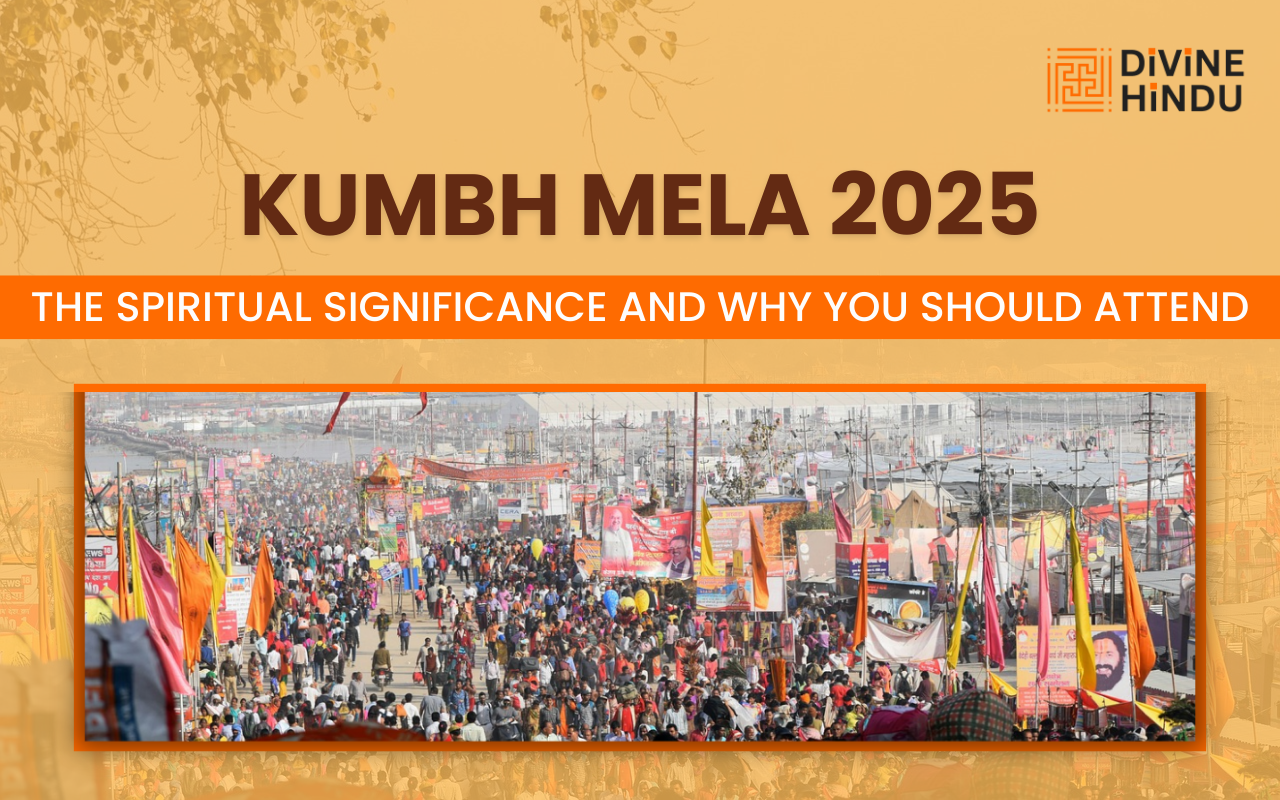The Kumbh Mela is not just the largest human gathering on Earth; it is also one of the most spiritually profound events, drawing millions of devotees, saints, and seekers from around the world. The upcoming Kumbh Mela 2025, taking place in Prayagraj (Allahabad), is a unique opportunity for individuals to connect with their spiritual essence, cleanse their soul, and embark on a sacred journey that has been followed for millennia. This article delves into the deep spiritual significance of Kumbh Mela and why attending it can be a transformative experience.
What is Kumbh Mela?
Kumbh Mela, a Hindu pilgrimage, is celebrated four times over a course of twelve years, rotating among four locations—Prayagraj, Haridwar, Ujjain, and Nashik. The Kumbh Mela 2025 will be held at Prayagraj, where the sacred rivers Ganges, Yamuna, and the mystical Saraswati meet at the Sangam. This event marks the coming together of millions of devotees for the ritualistic bath, which is believed to wash away sins and bring spiritual liberation, or moksha.
The essence of Kumbh Mela lies in its belief that during certain astrological alignments, the waters of the holy rivers become particularly charged with divine energy. Bathing in these waters during the Kumbh Mela is said to cleanse one’s sins and lead to spiritual enlightenment.
The Mythological Significance of Kumbh Mela
The origin of Kumbh Mela is rooted in ancient Hindu mythology. The story of Kumbh Mela comes from the churning of the ocean—Samudra Manthan—by the gods and demons in search of the elixir of immortality. During this cosmic event, drops of the elixir, or Amrit, fell at four locations: Prayagraj, Haridwar, Nashik, and Ujjain. These drops blessed these places with divine power, which is why they are considered the holiest spots for Kumbh Mela.
The act of bathing in the rivers at these locations during Kumbh Mela is believed to wash away past sins, purify the soul, and break the cycle of rebirth, guiding devotees toward moksha. For many Hindus, this pilgrimage is a once-in-a-lifetime opportunity to experience the blessings of the gods.
Why Prayagraj is Sacred
Prayagraj is considered the most significant of all the Kumbh Mela sites due to the convergence of three sacred rivers at the Triveni Sangam—the Ganges, Yamuna, and the mystical Saraswati. This confluence is considered the point of the highest spiritual energy, where the waters are believed to be most potent for spiritual purification.
The Sangam is not only a physical meeting of rivers but also a symbol of the merging of body, mind, and spirit. The Ganges symbolizes knowledge, the Yamuna represents devotion, and Saraswati signifies purity. This unique triad makes Prayagraj the ultimate destination for those seeking spiritual growth.
Key Dates of Kumbh Mela 2025
The Kumbh Mela 2025 will begin on January 14, 2025 (Makar Sankranti) and conclude on February 26, 2025 (Maha Shivratri). These dates are marked by significant celestial alignments that are said to enhance the spiritual power of the ritual bath.
Makar Sankranti (January 14): The first Shahi Snan (Royal Bath), an important bathing day when ascetics and saints from various Akharas (monastic orders) lead the procession to the river.
Maha Shivratri (February 26): The culmination of the Kumbh Mela, a night dedicated to the worship of Lord Shiva, where devotees fast, meditate, and immerse themselves in the divine energy of the festival.
Spiritual Benefits of Attending Kumbh Mela 2025
Cleansing of Sins: One of the most widely believed benefits of attending Kumbh Mela is the purification of one’s soul. By taking a dip in the holy waters at the Sangam, devotees wash away their sins, giving them a fresh start on their spiritual journey.
Attaining Moksha: According to Hindu beliefs, Kumbh Mela offers an opportunity to break free from the cycle of birth and rebirth. The spiritual practices performed at Kumbh Mela are believed to help individuals achieve moksha, or liberation.
Spiritual Awakening: Kumbh Mela is a gathering of not only millions of pilgrims but also saints, sadhus, and gurus. Attending their discourses, receiving blessings, and witnessing their spiritual practices can lead to deep personal insights and spiritual growth.
Satsang and Devotion: The atmosphere at Kumbh Mela is charged with the energy of devotion. Participating in bhajans, kirtans, and satsangs (spiritual gatherings) allows devotees to feel connected to the divine and experience a heightened state of consciousness.
Strengthening of Faith: Kumbh Mela is a festival of faith. For those who attend, it serves as a reminder of their spiritual beliefs, strengthens their connection to the divine, and reaffirms their commitment to living a life of righteousness and devotion.
How to Spiritually Prepare for Kumbh Mela 2025
Meditation and Fasting: In the weeks leading up to Kumbh Mela, engage in regular meditation and fasting to purify the mind and body.
Spiritual Tools: Use tools like Rudraksha malas, spiritual bracelets, and meditation beads to deepen your spiritual practice.
Connect with Saints and Gurus: Seek out guidance from spiritual leaders who will be attending the Kumbh Mela to prepare mentally and emotionally for the pilgrimage.
Conclusion
Kumbh Mela 2025 in Prayagraj is a once-in-a-lifetime opportunity to engage with one of the world’s oldest and most profound spiritual festivals. Whether you’re seeking to cleanse your soul, attain moksha, or simply connect more deeply with your spiritual self, attending this event offers transformative potential. Make your pilgrimage with an open heart, and immerse yourself in the divine energy of Kumbh Mela to experience the ultimate spiritual awakening.
By focusing on the spiritual benefits and rich history behind Kumbh Mela, this blog aims to inspire and guide potential pilgrims toward making the journey to Prayagraj in 2025. If you're preparing for this pilgrimage, don't forget to equip yourself with spiritual tools like Rudraksha jewelry from Divine Hindu, designed to protect and empower you on your sacred journey.



